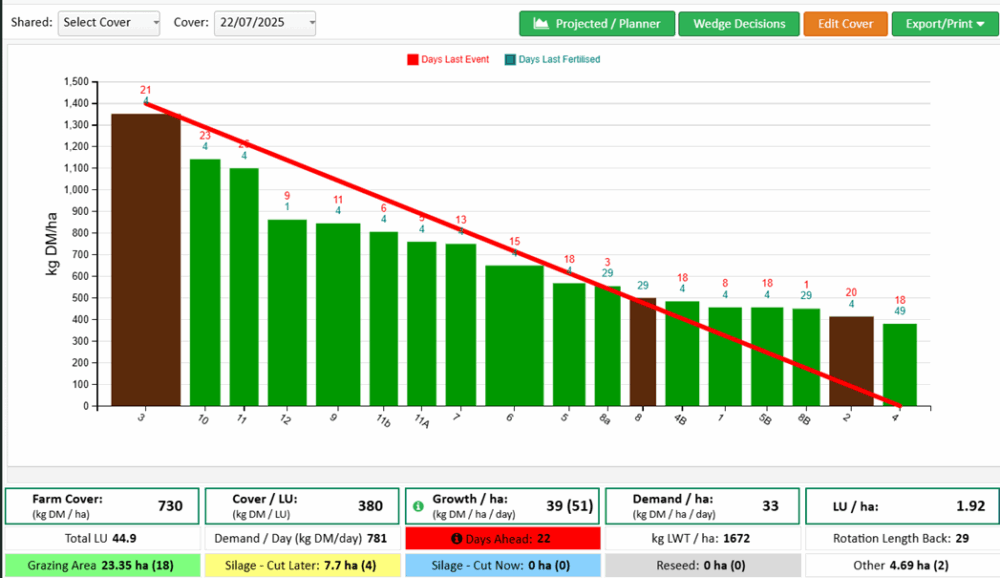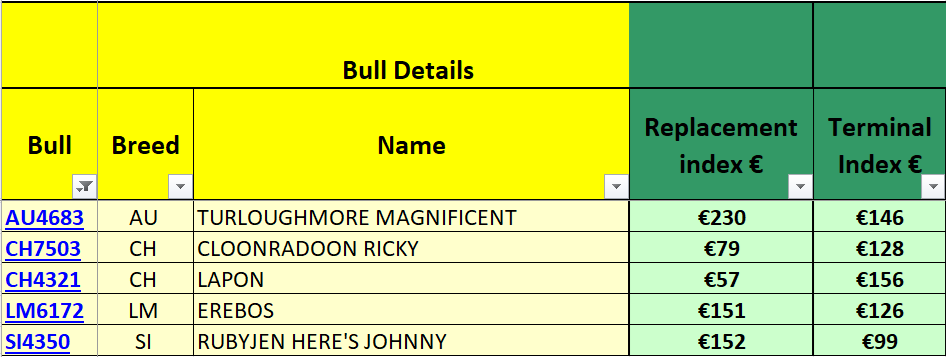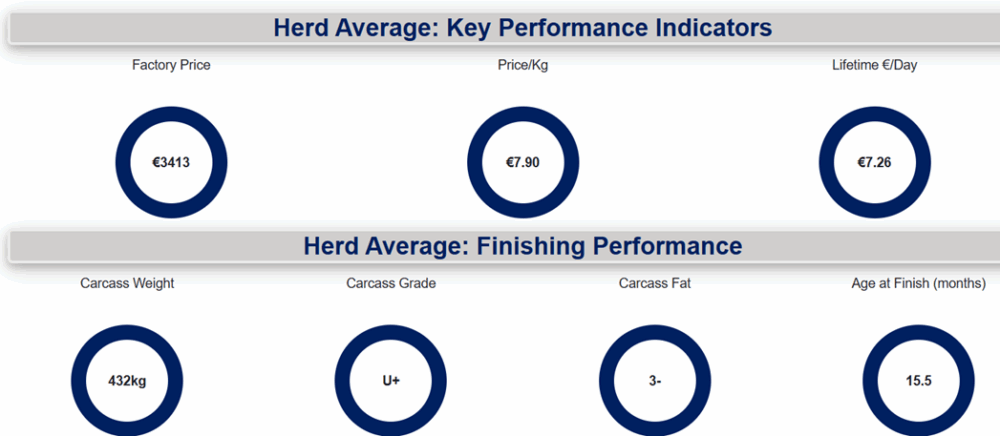Grassland management
- Dealing with reduced grass growth rates
- Completing a winter fodder budget
- Options to correct a fodder deficit
The growth rate on the farm has averaged 35kg of dm/ha for the month of July. The growth on the farm was affected by the soil moisture deficit. Eamon and Donnchadh took steps to reduce their demand from over 50kg dm /ha to 33kg dm/ha. The newly reseeded ground came back into the grazing rotation at the start of July and also some of the second cut silage ground has now come back into the rotation. Also heifers that were ai’d have been moved to the outblock in an effort to reduce demand. There has been excellent utilisation of grass on the farm. Some baled silage has been fed to the spring calving herd at grass just to slow down the rotation until grass growth rates recover to normal. The remaining fertiliser allowance was calculated for the farm and a fertiliser application plan was drawn up for the farm. Eamon and Donnchadh had skipped at round of fertiliser during the prolonged dry period, so decided to blanket spread the farm with 1 bag of 29:0:14 (protected urea) per acre once the rain had arrived. Currently the farm cover is 730kg dm/ha meaning cows are grazing covers of 1300 to 1400kgs dm/ha (see figure 1).
A winter fodder budget was completed for a 4.5 – 5 month winter period and a fodder deficit of 11% or 86 bales was identified. A portion of ground has been fertilised and closed for a third cut and it is hoped 150 bales will be made from this area. Options for stretching fodder will be examined and put in place before the housing period. Extra straw could be purchased to stretch existing fodder stocks, alternatively purchasing baled silage or a high fibre based straight could also be examined.
The winter barley crop was harvested and the crop yielded about 3.75t/ac. The straw yield was back so extra straw will be purchased for bedding material. Approval has been granted for the construction of the new roofed slatted easi-feed unit and the bases for the stanchions for the new shed have been poured. By having this new facility ready for the winter the amount of straw required for purchase for bedding material will be significantly reduced.
The tillage ground will now be allowed to green up before being burnt off with a suitable glyphosate product. A red clover silage mix will be sown in this area.

Grass wedge for farm dated 22/07/2025

2025 fodder budget
The first autumn calvers were due to commence calving on the 20th of July with the last cow due on the 31st of August. To date 4 cows have calved, with 1 cow having twin calves. The autumn calvers are moved to the outblock for summer grazing. The outside block of ground is marginal by nature and is part of an SAC catchment. This ground cannot be reseeded and as a result more diverse older leys. Eamon and Donnchadh find that cows generally don’t get overfat on this ground which is ideal for dry cows. The cows are brought back for calving in batches of 5 or 6 and receive a trace element bolus on arrival. Dry cows are monitored throughout the summer for fly activity and treated with a pour-on to prevent summer mastitis. The ai bulls used on the autumn herd include AU4683, LM6172, CH4321, SI4350 and CH7503. Both SI4350 and LM6172 were both used for breeding female replacements (see figure 3). The weanlings will receive their primary and booster shot vaccine for viral pneumonia towards the end of august and again 4 weeks later in September.

AI sires used on the autumn herd

Autumn 2025 born calves
The spring calving herd have been finished breeding for over a month and 5 cows have been identified as not being in calf. That equates to an empty rate of 14% over a 7 week period.

The 2024 born bull calves have been housed and will gradually be stepped up onto their ad-lib diet consisting of 50% rolled barley and 50% 14% high energy beef ration. There are 3 bulls left to finish from the spring 2024 born herd. The remaining bulls sold have averaged as follows:
